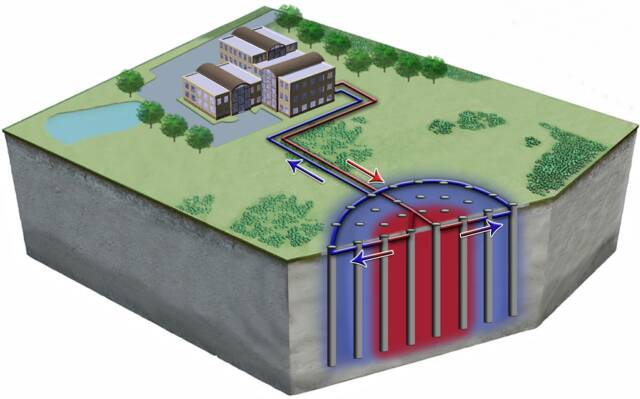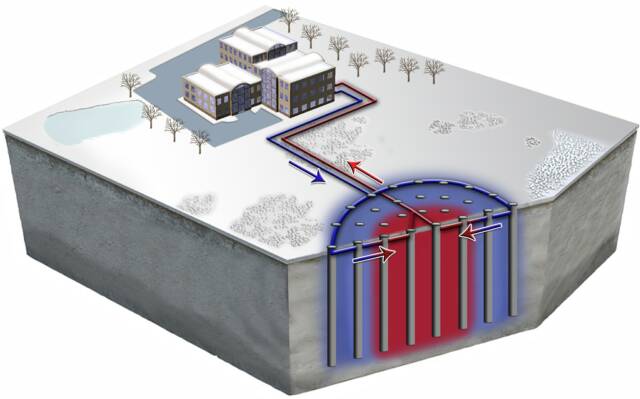BTES - Borehole Thermal Energy Storage
What is BTES?
BTES is an improvement on conventional closed-loop ground source heat pump (GSHP) geothermal systems. The ground heat exchanger (GHX) array for a BTES system is designed and operated in a manner such heat is stored or abstracted seasonally, whereas conventional GSHP systems are designed to simply dissipate heat or cold into the subsurface. BTES essentially uses the Earth as a thermal battery, as opposed to a radiator.
How does BTES work?
BTES typically involves design and operation of the GHX in a manner such that heat is sequentially built up in, or abstracted from, a cylindrical volume of soil or rock. This is accomplished by configuring the GHX array in a radial fashion, and reversing the flow direction seasonally.
How efficient is BTES?
BTES can achieve coefficient of performance (COP) values from 4 to about 8, compared to COP values of around 3.5 for a conventional GSHP geothermal installation.
Is BTES expensive? Difficult to permit?
The capital cost of a large BTES system can be significant, as a large number of geothermal boreholes will need to be drilled, compared to just a few thermal wells for an ATES system. However, the installation cost should be similar to conventional GSHP systems, and the higher COP values will result in a lower total life-cycle cost than a conventional GSHP system. Both closed-loop geothermal systems will have a lower life-cycle cost than a conventional fossil-fuel fired HVAC system. Because BTES is a closed-loop geothermal technology, there should be little difficulty in obtaining permits. Typically, the most common constraint is on the available land area in which to construct the GHX array.


BTES Summer Operation - Cooling
BTES Winter Operation - Heating
Images copyright 2009, Underground Energy, LLC.
Underground Energy, LLC
Applied Hydrogeology
Geothermal Innovation